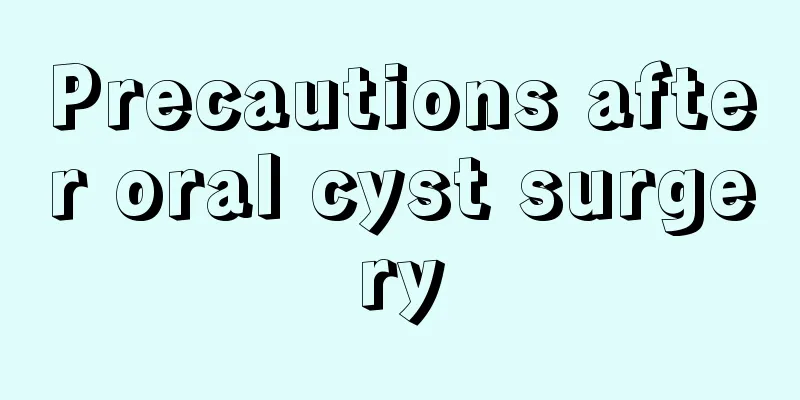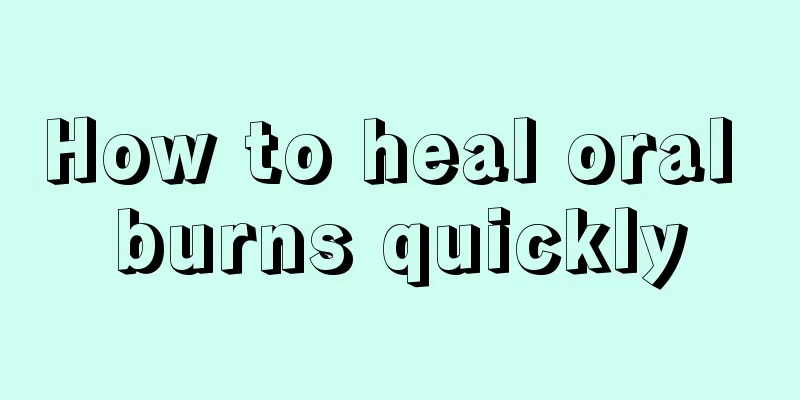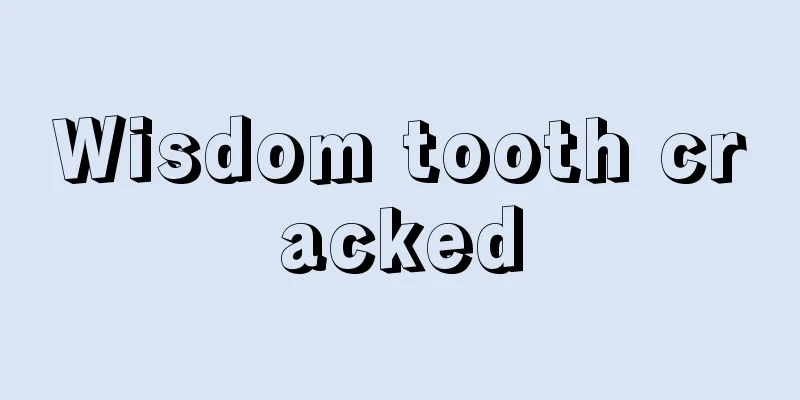Precautions after oral cyst surgery

|
Oral disease is a relatively serious disease problem. If it occurs, you should pay attention to timely treatment. Moreover, if a cyst occurs in the mouth, surgery is the most commonly used treatment method, and some things should be paid attention to during the recovery period. Especially in the post-operative dietary care, it is necessary to avoid the recurrence of the wound. So what are the precautions after oral cyst surgery? 1. Pay attention to diet after sublingual gland cyst surgery 2-4 hours after surgery, the patient can eat a residue-free cold liquid diet. Cold food can cause blood vessels to constrict, which helps stop bleeding, reduce edema and pain, and minimize the impact on the wound. You can choose to drink some cold milk, ice cream, juice, etc. Semi-liquid diet and soft food can be eaten 4 hours after the operation to the next day, such as egg custard, soft steamed buns, rice porridge, boiled noodles, vegetable puree soup, etc. The diet should be light and no meat or fish should be consumed. Do not eat rough foods, such as leeks, celery, hard rice, etc., so as to avoid rough particles irritating the wound and hindering healing. Be careful to keep the food warm and not overheat it, so as not to dilate the blood vessels and cause bleeding from the wound. Choose tender vegetables and cook them until they are soft and finely chopped. They can then be made into sauces, minced meats, juices, and the like. This eating method should be maintained until 1 week after surgery. 2. Food taboos for sublingual gland cyst After the operation, you should drink at least one glass of fruit juice or milk every day to replenish the vitamins lacking due to the lack of fresh vegetables. You can also drink juice from citrus, apple, tomato, etc. You should eat foods containing vitamin B, vitamin C, iron, calcium, etc. on a regular basis. Avoid eating irritating meat, spicy vegetables and seafood. 3. Causes of sublingual gland cyst There are two reasons for its occurrence: one is that the distal end of the glandular duct is blocked, while the mucosa continues to secrete, causing the proximal end to expand and form an epithelial cyst, which is called a retention cyst; the other is that due to glandular damage, mucus leaks into the tissue gap, forming a cyst without epithelial lining, which is called an extravasation cyst. Mucous cysts range in size from mung bean to broad bean. Sublingual gland cysts can be even larger. The cysts are light brown-yellow in color and ooze egg white-like brown-yellow mucus after rupture. Repeated damage often causes local nodules and the surface mucosa is white. What are the symptoms and treatment of sublingual gland cysts? Sublingual gland cyst is a cyst formed by obstruction of the sublingual gland duct and saliva retention. The cyst is located under the mucosa on one side of the floor of the mouth. It is a light blue tumor with a thin cyst wall and a soft texture. Clinical manifestations: Simple type: accounts for the majority. The cyst is located in the sublingual area, is light purple-blue in color, and feels soft and fluctuating. Usually located on one side of the floor of the mouth. Larger cysts can lift the tongue, giving it the appearance of a "heavy tongue." After the cyst ruptures due to trauma, a sticky, slightly yellow or egg white-like liquid flows out and the cyst disappears temporarily. After a few days, the wound healed and the cyst grew as before. Extraoral type: also known as latent type. The main manifestation is a tumor in the submandibular area, while the cyst in the floor of mouth is not obvious. It is soft to palpation, has no adhesion to the skin, and is incompressible. Dumbbell type: It is a mixture of the above two types, that is, cystic tumors can be seen in the sublingual area inside the mouth and the mandibular area outside the mouth. Differential diagnosis: It should be differentiated from hemangioma, lymphangioma, and dermoid cyst at the floor of the mouth, mainly relying on the examination of the puncture contents. Viscous fluid can be extracted from the sublingual gland cyst. Treatment: The radical cure is to remove the sublingual gland, and the remaining part of the cyst wall will not cause recurrence. For patients and infants whose general condition cannot tolerate sublingual gland removal, a simple marsupial suture can be performed, and sublingual gland removal can be performed after the general condition improves or the infant reaches 4 to 7 years old. |
<<: What causes a cyst behind the ear
>>: Is surgery necessary for laryngeal cyst
Recommend
What to do if there are bugs in the rice
Nowadays, families all like to eat rice, but rice...
How to treat eczema on a child's hands with small blisters
Eczema is a relatively common skin disease, espec...
Yellow urine, turbid and smelly
Urine is a substance that is normally metabolized...
What are the symptoms of eczema
Eczema is a common and highly prevalent skin dise...
What are the common treatments for lung cancer
Lung cancer is a malignant lung tumor with a rela...
Chinese bees grow fast if they are fed sugar water every day
There are some hidden beekeepers in many deep mou...
How to prevent cervical cancer? Common symptoms of cervical cancer
If you can detect cervical cancer as soon as poss...
What are some tips for removing oil stains from sports shoes?
The dirt on shoes is very annoying because it aff...
Why don't you like to talk
Everyone has different personality traits. Some p...
What to do with calluses on feet caused by wearing shoes
Whether shoes are comfortable is very important f...
What are the common treatments for lung cancer? The three major clinical treatments for lung cancer
Lung cancer is one of the three major malignant t...
How to reduce the width of the mandible
For those who love beauty, if the jawbone is too ...
The benefits of moxibustion on women's private parts
In life, many women like moxibustion, because lov...
What is the incubation period of nasopharyngeal cancer and how to prevent it
Nasopharyngeal cancer is not a sudden disease, it...
How long can one live if lung cancer turns into advanced brain cancer
Brain metastasis has the shortest survival time b...









